I received the same question, from 2 different people, within 2 months. This convinced me that an article about natural drying of wood "at home", with the usual means in a household, can be interesting for many people. But first of all you need to know that walnut, in Romania, is a protected species and you need approval to cut it. Approval is also required for the one in your own backyard.
Nucul is a hardwood. Drying such wood creates very high stresses inside it, which can cause cracks.
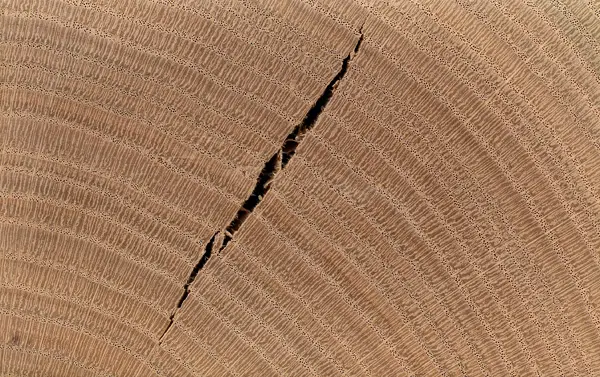
That's why there are a few rules to follow.
- The trunk should be made into planks as soon as possible after the tree has been felled. The thickness of the plank is variable and depends on what is to be obtained from it.
- Keep in mind that as the board dries, the size of the plank decreases. Cut the planks slightly larger than the size you need.
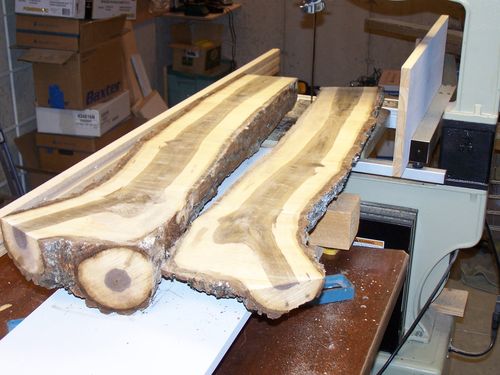
- To prevent cracking, the ends of the plank are sealed with paraffin, special oils or diluted primer. This will slow the moisture out of the wood and reduce the risk of cracking.
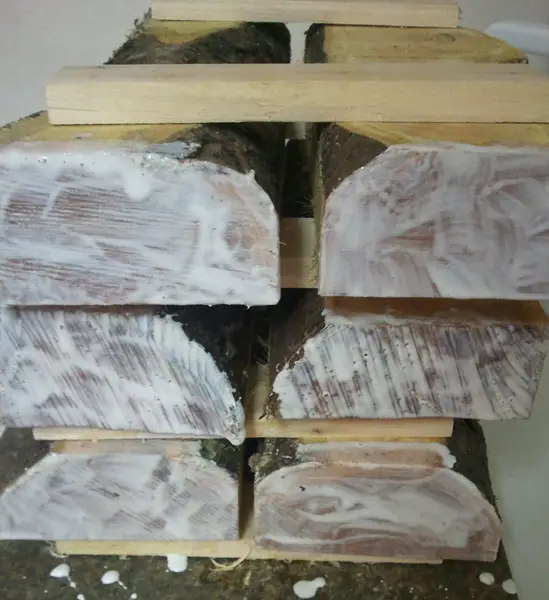
- Depending on the time of felling, the humidity inside the tree can reach up to 200% (spring). It must be removed slowly to avoid tension inside the wood. It is recommended to cut during the dormant period (November-January) because the amount of water in the tree is the lowest.
- The bark does not peel off during drying. It acts as an insulator, slowing the outflow of moisture and reducing stresses.
- If there are insect or mold infested areas, they should be removed so as not to contaminate the rest of the wood.
- The boards are stacked 30-40 cm from the ground. Wooden slats of 8/10 or 10/10 mm are placed between the planks, perpendicular to the plank. These allow air to circulate around each plank. A fairly heavy weight (100-200 kg) is placed on the stack so that the wood does not warp during the drying period.

- It is recommended that stacking is done in a shelter, under a shed or even in a barn. The cellar can also be used, as it has constant temperature and humidity. Ventilation is very important to promote drying. A fan can be used to increase air movement. If there is no possibility of sheltering the stack, it should be covered (with sheeting, Plexiglas or other materials that can protect it).
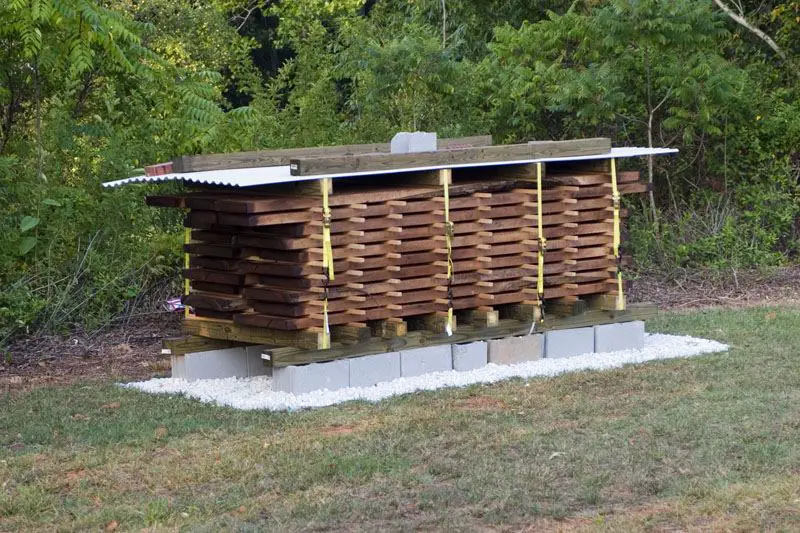
- Natural drying of the wood takes place slowly and depends on the thickness of the plank. One year is needed for every 1 inch (2.5 cm) of thickness. Some experts say one year for every inch plus one year. That means a 2 inch plank needs 2+1=3 years, a 3 inch plank 3+1=4 years and so on.
- The natural drying process stops when the wood has reached equilibrium. The equilibrium humidity depends on the ambient humidity. Here, the equilibrium humidity is around 12%. If the humidity is to be lowered below this value, the wood needs to be taken to a heated room.
- The equilibrium moisture content is determined by measuring the internal moisture content of the lumber. It is reached when several consecutive measurements show the same value.
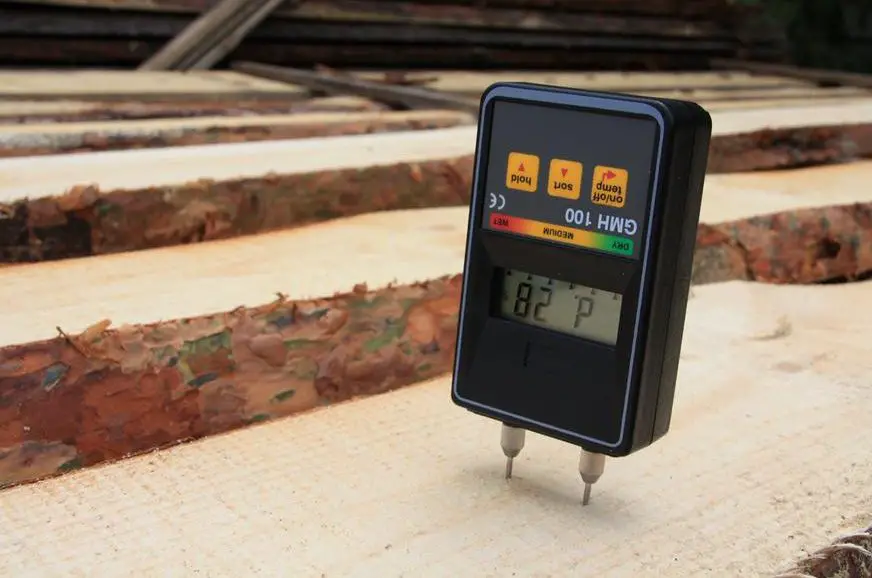
- To achieve good results in natural drying of hardwoods, do not cut young trees, avoid knots as much as possible, and make sure that the wood has no growth defects.
I am convinced that following these recommendations will result in very good quality timber.
Of course, there is also the possibility that forced dryingin special dryers. In this case the drying time is significantly reduced.
If the wood is not properly dried the consequences can be very unpleasant. The wood may crack or warp, and the object made of such wood is totally compromised. More information on equilibrium moisture content can be found at here.




























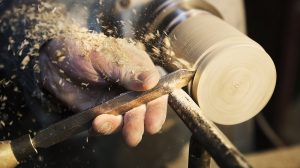




I read with great attention and share every posted , I love it and hope you will not stop posting ... If you can alrticles with wood finishing . Thank you
Thank you. I promise I will write as many articles about finishing as I can. 🙂 If you are interested in a specific topic please let me know. I will be happy to develop it into an article.
Hello, very interesting topic and topical as far as I am concerned. I am going to cut a walnut tree and I would like to know if the wood can be dried as a log?
Thank you
Hello. Being hardwood, there is a lot of tension inside when drying. Therefore, it is almost impossible to dry without cracking. It should be "sliced" immediately after cutting, as this will reduce the stresses. The moisture content at the time of cutting also matters. In the fall and winter, the interior humidity is lower and stresses are lower. The age of the tree also matters. When it's young it splits more easily. It also depends on what you want to do with it. In the past, in the country, people used to cut the acacia (very hard, very tough essence) and use it immediately for the strength structures of their houses. Over time, cracks appeared inside the posts and beams, but they were not disturbing.
I wish you success!
Thank you for your reply! Have a nice day.
Very useful article, as a summary it's good to
- we cut the tree during the resting period of the wood, i.e. autumn and winter,
- after cutting it is best to cut it to the desired thickness plus a tolerance that will decrease in the drying process,
- will not peel off the skin
- after cutting it will be stacked in the stack with 5-10cm spacers and at the end it will be "insulated" with paraffin or diluted primer.
- drying time for every 2,5 cm = 1 year + 1 year for balancing the interior humidity in the whole wood surface. for a 10 cm thick post the minimum drying time according to the specialists is 4+1 = 5 years.
You summed it up perfectly. I don't think I could have done better. 🙂
All the best.
Hello,
If I cut the walnut on Saturday, how long does it have to be sliced?
Is 2 weeks too long to sit in the garden?
Thank you.
Have a nice day.
The faster you slice it the better. The fact that you sliced it at this time is good, the water content is lower. It is good to hurry up with the slicing, because the recommendation is to do it immediately after slicing. Then seal the ends of the shingles with paraffin.
Good luck!
Mrs Mihaela
Can you give me information on where I could buy exotic wood (or waste -minimum 30 x 20 mm)?
Short Dan
Good evening, what do you think about the acacia wood?
Good evening.
Find out more about acacia wood here. There is my opinion, which is very good. 🙂
All the best!
With the clarification that that damn inch, in Romanian is called țol.
It is an Anglo-Saxon unit of measurement so the original name is INCH, pronounced in Romanian as "inci".In German, the inch is called "zoll".In Romanian, both inch and zoll are neologisms and are used depending on the circumstances.
Mr. Chicken Little's comment is awaiting moderation! Mine is a case in point!
inch in English, tol(zol) in German the same 2,54mm.
Madam engineer, I would be interested in how and where walnut trunks can be used for veneer.
Hello.
Unfortunately I can't help you much. The old veneer factories have disappeared (see Furnimob in Constanta), and the new ones are few (Rariwood, near Arad) and little interested in such collaborations. I'll look into it and if I find something I'll let you know.
All the best!
Hello. Please recommend me in Cluj where to take the walnut trunk to be cut properly. I would like to make tables out of it unprocessed just varnished or with polymer resin. What do you think about using resin? Contact Oana 0742038131. Thank you.
Good evening,
I find an inexhaustible source of interesting articles on your site and thank you for that!
I am writing to you, however, with a request for guidance.
A couple of weeks ago, I got a trunk of acacia from the wood shed and tried to turn it into a decorative object. As soon as I took it out of the shed, I peeled it and brought it "to the block" to paint it.
But I was surprised to find that the wood had cracked from top to bottom and I could not use it as I had planned.
As I do not have the possibility to apply a complex wood drying process, I would like to ask you if there is another "house" action I can perform to prevent the wood from deteriorating (cracking) after peeling.
Should I apply a certain solution/material immediately or should I simply give it time to dry naturally?
Thank you for your time!
Hello.
There must have been a big difference in humidity between the shed and the apartment. The wood had probably not been cut long and still had a high water content. Especially if it had been cut recently, in the middle of the growing season. The water came out much quicker and the lack of bark flayed. This caused tension and the wood cracked.
Salcam is a very hard wood and the stresses that occur are much higher compared to other woods. You should have left it with the bark, drying would have been slower. You could try sealing the grain ends (the sections perpendicular to the log) with an aracite solution (aracite dissolved in water at 10-20%), paraffin or a very thin layer of varnish (very thinned varnish). That way the water comes out more slowly and you have a better chance of it not cracking. It also matters a lot when the tree was cut.
Thank you for your appreciation.
All the best!
Good evening,
I received a walnut log with the bark on it that has been sitting in a shed for 2 years. I managed to slice it to 5cm thickness. I intend to build an epoxy resin coated countertop. If it is fully coated in epoxy, is there still a danger of cracking, bending the wood?
Good evening!
If it is totally covered (buried in resin) nothing happens. There is no moisture exchange with the environment and the wood does not move. But make sure it doesn't crack until it gets into the resin.
You have a link below to an article about swelling and shrinking wood. At the end I answered a similar question.
All the best!
https://revistadinlemn.ro/2019/06/18/umflarea-si-contragerea-lemnului/
Dear Madam,
Thank you for the useful information!
Hello!
Glad to have been of service.
All the best!
Cut when there is no more vegetation, up to the swallow hole. Slice and store at plus 5 degrees, otherwise it will crack from frost...in summer it should be kept cool (max 20 degrees).
Hello, I appreciate the information posted and enjoy reading. I would need some advice if possible. I have a chopped cherry tree, 2 logs about 1,5m long and 15-20cm thick. My desire is to process them on lathe, grain bowl etc, but they crack shortly after I start processing. Can you direct me to a drying method that will help me get rid of this problem? Thanks, Horatiu
Hello!
Thank you for your appreciation.
Cherry is a wood that does not develop very high tensions. However, if the water content is high (depending on the period of felling), and if it is uncut, tensions appear. You should coat the ends with paraffin or a diluted water-based primer. This will slow down the moisture coming out. The recommendation is to leave it with the bark on, but there is also a risk of insects under the bark getting into the wood. Do not leave it in the sun and keep it in well ventilated areas. It would be good if you had a well-ventilated shed or cellar.
There are methods of rushing water out of green wood or stabilising it, but they are difficult to apply to large pieces of wood. Find some of these methods in the link below.
I hope you found it useful.
All the best!
https://revistadinlemn.ro/2018/06/13/stabilizarea-lemnului-verde-pentru-evitarea-craparii/
Thank you very much for your answer. The bushes with bark and healthy but unfortunately have been in the sun a lot. I will cover the ends and use the garage for storage, I just don't think it is ventilated enough. I'll give it a try. Thanks
Do not close the garage tightly. Always leave a window or door unlocked. That way, air exchange will take place (even if more slowly) and the wood will dry out. In this case, a very strong draught is not recommended either.
All the best!
In what proportion should the primer be diluted? Can thinner-based primer be used? If I use aracite, in what ratio aracite/water? I have some walnut logs recently cut and it will take a while to cut them into planks and I would like them not to crack. Thank you!
The important thing is to make them more fluid so that they are absorbed by the wood and close the ends of the fibre. You can use a 1:1 ratio for the aracite, i.e. one part water to one part aracite. For primer, if it is more fluid, put 2 parts primer to 1 part thinner. If the primer is quite viscous you can use the same ratio as for the aracite.
Good luck!
Good evening!
Very complex and useful your articles!
I have a request if you can help me with some advice.
Two weeks ago I cut a walnut tree and sliced it to 8 cm thick in order to make table tops. It is currently drying naturally in the barn, on the hull, with the stems covered with aracet. I should mention that during the cutting process it could be observed that the wood contains a lot of water. The question is how should I proceed with forced drying so that there is no loss?
( natural drying about 1 year and then dryer or I can put it in a steamer now - for color - and then in the dryer )
Thank you?
Hello!
It was definitely cut during the growing season, hence the high water content. You should have left it for winter (November-January). I think the best solution would be a controlled drying in the dryer. That is if you find a dryer that has the right cycles for the current moisture content of the wood. A kiln drying now, when the wood is very wet and the outside humidity is low due to drought, can result in a high percentage of splitting. Now it is very important to keep it out of the sun.
Information about wood drying can be found in the links below.
All the best!
https://revistadinlemn.ro/2017/07/03/uscarea-lemnului/
https://revistadinlemn.ro/2018/06/13/stabilizarea-lemnului-verde-pentru-evitarea-craparii/
Very good article
Why are we talking in inches and not in cm?Have we changed course?